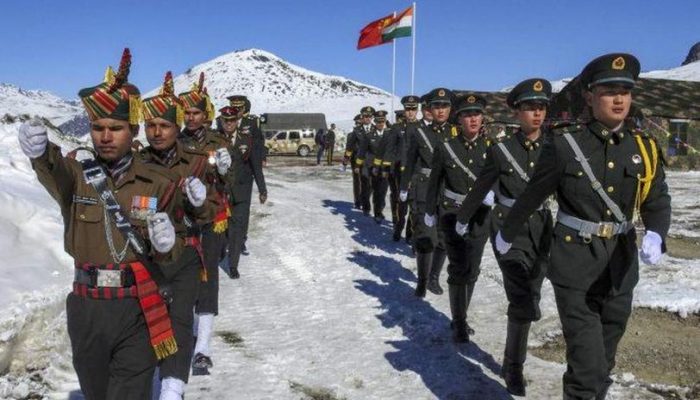
New Delhi: Even as efforts were on to defuse the tension along the Sino-Indian border, there was a violent clash at Galwan Valley in Ladakh where Chinese troops provoked their Indian counterparts leading to massive escalation and the death of an Indian Colonel and two soldiers in a “violent face-off” on the night of June 15.
Media reports quoting Army sources said the soldiers were not shot but were killed in a physical fight on Indian Territory that involved stones and batons. Major Generals of both sides are meeting currently, according to an official statement. This is the first violent incident involving fatalities since 1975 between India and China, who fought a brief border war in 1962.
“During the de-escalation process underway in the Galwan Valley, a violent face-off took place yesterday night with casualties on both sides. The loss of lives on the Indian side includes an officer and two soldiers. Senior military officials of the two sides are currently meeting at the venue to defuse the situation,” an Army statement said.
The Colonel was from the Bihar regiment. There was no shootout, say sources, on the clashes that caused “significant casualties” on the Chinese side. “There was no firing. No firearms were used. It was violent hand-to-hand scuffles,” an unnamed officer was quoted as saying.
The clash took place just as Chinese troops were getting ready to move away from a location as per an agreement. The Colonel was reportedly assaulted with stones and Indian soldiers retaliated, which led to close unarmed combat for several hours. The soldiers disengaged after midnight.
The only admission of casualties on the Chinese side so far has come from the editor of their government mouthpiece Global Times. “Based on what I know, Chinese side also suffered casualties in the Galwan Valley physical clash. I want to tell the Indian side, don’t be arrogant and misread China’s restraint as being weak. China doesn’t want to have a clash with India, but we don’t fear it,” tweeted Hu Xijin, Editor-in-Chief of Global Times.
Beijing, in an aggressive statement, accused India of crossing the border, “attacking Chinese personnel”, said news agency reports. China’s Foreign Ministry was quoted as saying India should not take unilateral actions or stir up trouble.
“What’s shocking is that on June 15, the Indian side severely violated our consensus and twice crossed the border line and provoked and attacked the Chinese forces, causing a violent physical confrontation between the two border forces,” Chinese foreign ministry spokesperson Zhao Lijian told reporters in Beijing. “China is raising strong opposition and stern representations to the Indian side on this,” he said.
Defence Minister Rajnath Singh briefed Prime Minister Narendra Modi on the situation at the border via video call after a meeting with Chief of Defence Staff (CDS) General Bipin Rawat, the three military chiefs and External Affairs Minister S Jaishankar. The Prime Minister’s scheduled meeting with Chief Ministers via video conferencing on COVID-19 was held as planned.
For more than six weeks now soldiers from both sides have been engaged in a stand-off in at least two locations along the Line of Actual Control — the 3,488 km de-facto boundary between India and China, and have rushed additional troops to the border. They have been facing each other at the Galwan River, which was one of the early triggers of the 1962 India-China war, and at the disputed Pangong Tso — a glacial lake at 14,000 feet in the Tibetan plateau, portions of which are claimed by both.
After weeks of face-off including an incident in which patrolling soldiers clashed on the banks of Pangong Lake, resulting in injuries, friction eased following talks. Indian and Chinese military commanders had been in talks in Galwan Valley area and Hot Springs. The Chinese Army had earlier pulled back its troops from the Galwan valley, PP-15 and Hot Springs in Eastern Ladakh area. The Indian side also brought back some of its troops and vehicles from these areas.
China has been upset about the Indian construction of roads and air strips in the area. The government has pushed for improving connectivity and by 2022, 66 key roads along the Chinese border will have been built. One of these roads is near the Galwan valley that connects to Daulat Beg Oldie air base, which was inaugurated last October.








